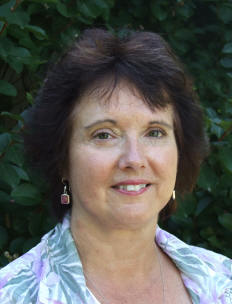 Do you have someone in your life that has left a lasting imprint on your heart? That special person for me is my Grandma Hope. Grandma never had many material possessions, but I didnít realize that
when I was a child. I thought that we were the wealthiest family in the world because my Grandma made each of her children and grandchildren feel special. She always had time to help us with some project we were creating, or
she would take time to tell us a story with a twinkle in her eye. She had unconditional love for her family and that love has trickled down through the generations.
Do you have someone in your life that has left a lasting imprint on your heart? That special person for me is my Grandma Hope. Grandma never had many material possessions, but I didnít realize that
when I was a child. I thought that we were the wealthiest family in the world because my Grandma made each of her children and grandchildren feel special. She always had time to help us with some project we were creating, or
she would take time to tell us a story with a twinkle in her eye. She had unconditional love for her family and that love has trickled down through the generations.
Grandma Hope had a strong work ethic and taught me many valuable life lessons. One of the things that I learned from her was gardening techniques. Grandma had a passion for growing vegetables and
flowers, and that is why I am so fond of gardening. Some of my family also share this trait passed down because of her love of the soil. Grandma Hope grew all the vegetables for her family and then canned the produce for
winter consumption.
Grandma could be found in her vegetable garden every day during the spring and summer. An apron would adorn her waist so that she could wipe the sweat from her brow. Grandma Hope practiced organic
gardening long before it became popular. She would plant marigolds in the vegetable garden to ward off insects, nasturtiums to repel squash bugs, and mint tea near the cabbages to improve the flavor of the cabbage. She had
rain barrels so that she could irrigate the vegetables when the natural rain water was sparse in the summer.
Grandma knew how to grow many crops in her vegetable garden in one season. In the early spring, she would plant peas in a double row and then sow corn between the double rows of peas when the peas
were in bloom. She would plant pole beans, which would climb the corn. The turnips would be planted among the corn in early August. She knew about companion planting (the art and science of laying out a vegetable garden so
that complimentary types of vegetables are planted in the same bed). That is why she planted sweet corn with beans, cucumbers and melons.
In her other "patch", she would plant lettuce, carrots, and radishes followed by sweet corn. At the other end of her "patch", she would have onion sets followed by bush beans. She would plant the
beans and corn in two to three week intervals to sustain the harvest. Near the end of the summer when the weather cooled, she would plant lettuce again for a fall crop.
Grandma would compost in the autumn by raking the fallen leaves and put them over her garden for decomposition over the winter.
She would plant dahlias for a beautiful display on the kitchen table. She also grew lilies. In late May, the Iris (which she called "flags") would be in full bloom. My favorite flowers were the
peonies. As children, we loved to watch the ants crawl on them.
Grandma and Grandpa lived in a very large red brick house. I can still visualize her hollyhocks gracefully framing the house. She also had climbing roses accenting the bricks of their dwelling. Their
fragrant scent would permeate the air on the front porch where the family would relax in the evening.
As a tribute to Grandma Hope, I have planted a flower garden in her memory. I grow my favorites, which are hydrangeas, roses, and container gardens, and then incorporate hollyhocks, violets, and
marigolds to remind me of Grandmaís gardens. I shop for "hope" garden decorations to place in my special garden.
We all have a tremendous effect on the lives of others. Be a blessing to your children, grandchildren, or someone elseís children. Enjoy the simple things in life. Spend time with family or substitute
family and with Godís creation and allow your kind and forgiving actions to speak louder than your words. Be good stewards of the earth. Reflect on your life and how you can leave a lasting legacy that will affect others in
future generations.
Read other articles on garden and landscape design
Read other articles by Carolyn Black